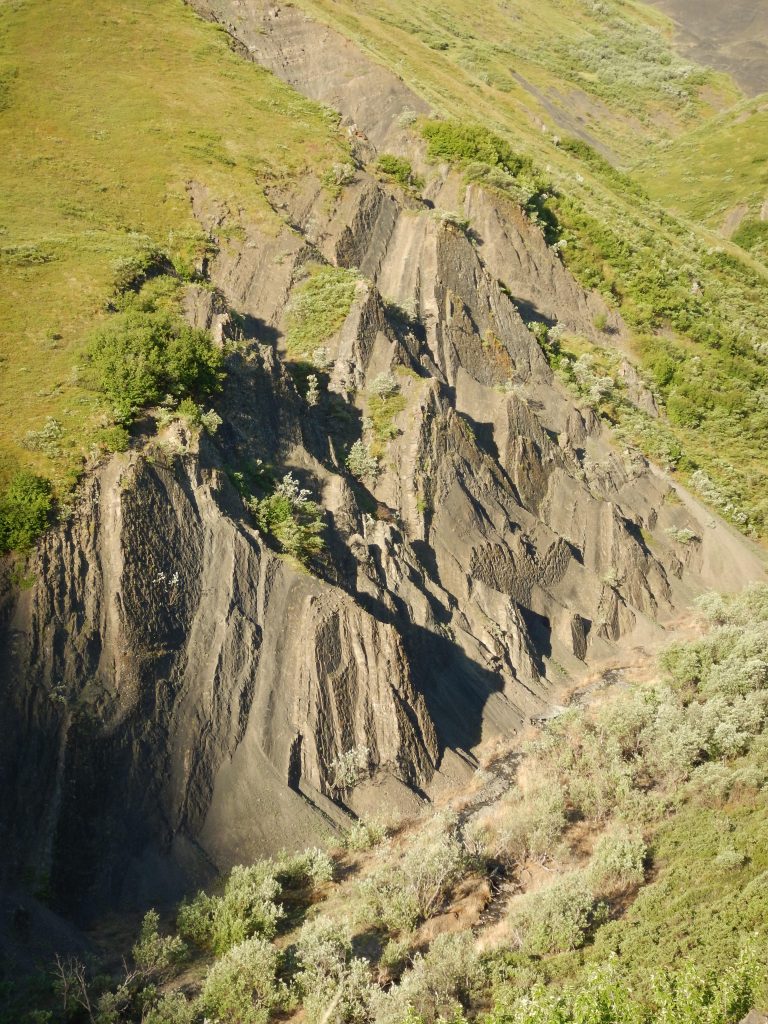
The Coliseum site is viewed from above. The once-horizontal rocks are now nearly vertical, exposing many hundreds of tracks on flatirons of resistant rock. The dimples on the rock faces are dinosaur tracks. Credit: Photo by Patrick Druckenmiller
Scientists from the University of Alaska Fairbanks have discovered and documented the largest known single dinosaur track site in Alaska. Located in Denali National Park and Preserve, this remarkable location has been named “The Coliseum” by the experts.
Spanning the equivalent of one-and-a-half football fields, The Coliseum is a remarkable assemblage of rock layers, each preserving a wealth of dinosaur footprints. This site provides a comprehensive historical account of various dinosaur species that flourished in what is now known as Interior Alaska, approximately 70 million years ago. The researchers’ findings and detailed descriptions of The Coliseum are presented in a paper recently published in the journal Historical Biology.
“It’s not just one level of rock with tracks on it,” said Dustin Stewart, the paper’s lead author and a former UAF graduate student who published the paper as part of his master’s thesis. “It is a sequence through time. Up until now, Denali had other track sites that are known, but nothing of this magnitude.“
At first glance, the site is unremarkable in the context of the park’s vast landscape: just a layered, rocky outcrop rising 20-some stories from its base.
“When our colleagues first visited the site, they saw a dinosaur trackway at the base of this massive cliff,” said Pat Druckenmiller, senior author of the paper and director of the University of Alaska Museum of the North. “When we first went out there, we didn’t see much either.”
Stewart recalled being initially underwhelmed when he approached the site at the end of a seven-hour hike. Then dusk approached, and the team took another look.
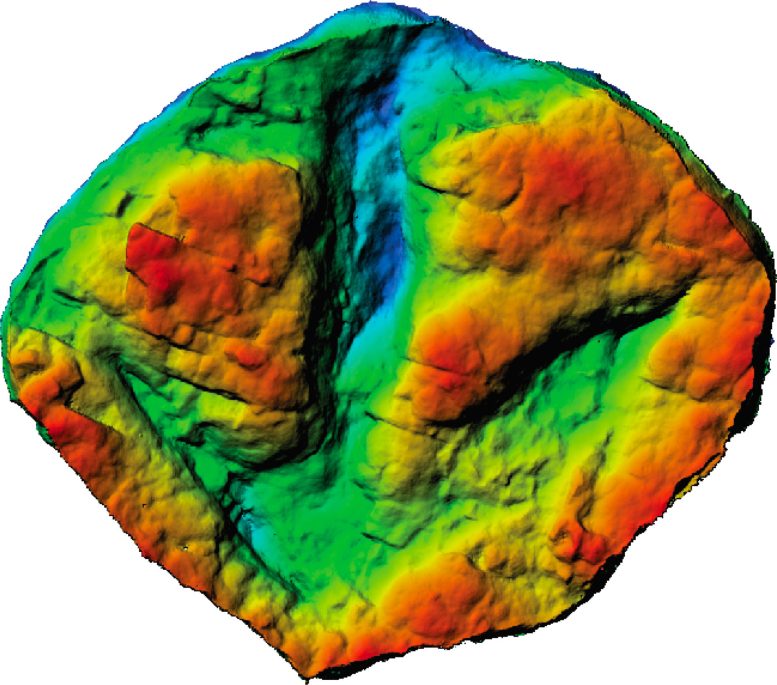
A single large meat-eating dinosaur track, likely from a tyrannosaur. The image was made by taking multiple photos from different angles to produce a three-dimensional view of the track, accentuated by colors. Credit: Image by Dustin Stewart
“When the sun angles itself perfectly with those beds, they just blow up,” he said. “Immediately all of us were just flabbergasted, and then Pat said, ‘Get your camera.’ We were freaking out.”
In the Late Cretaceous Period, the cliffs that make up The Coliseum were sediment on flat ground near what was likely a watering hole on a large flood plain. As Earth’s tectonic plates collided and buckled to form the Alaska Range, the formerly flat ground folded and tilted vertically, exposing the cliffs covered with tracks.
The tracks are a mix of hardened impressions in the ancient mud and casts of tracks created when sediment filled the tracks and then hardened.
“They are beautiful,” Druckenmiller said. “You can see the shape of the toes and the texture of the skin.”
In addition to the dinosaur tracks, the research team found fossilized plants, pollen grains, and evidence of freshwater shellfish and invertebrates.
“All these little clues put together what the environment looked like as a whole,” Stewart said.
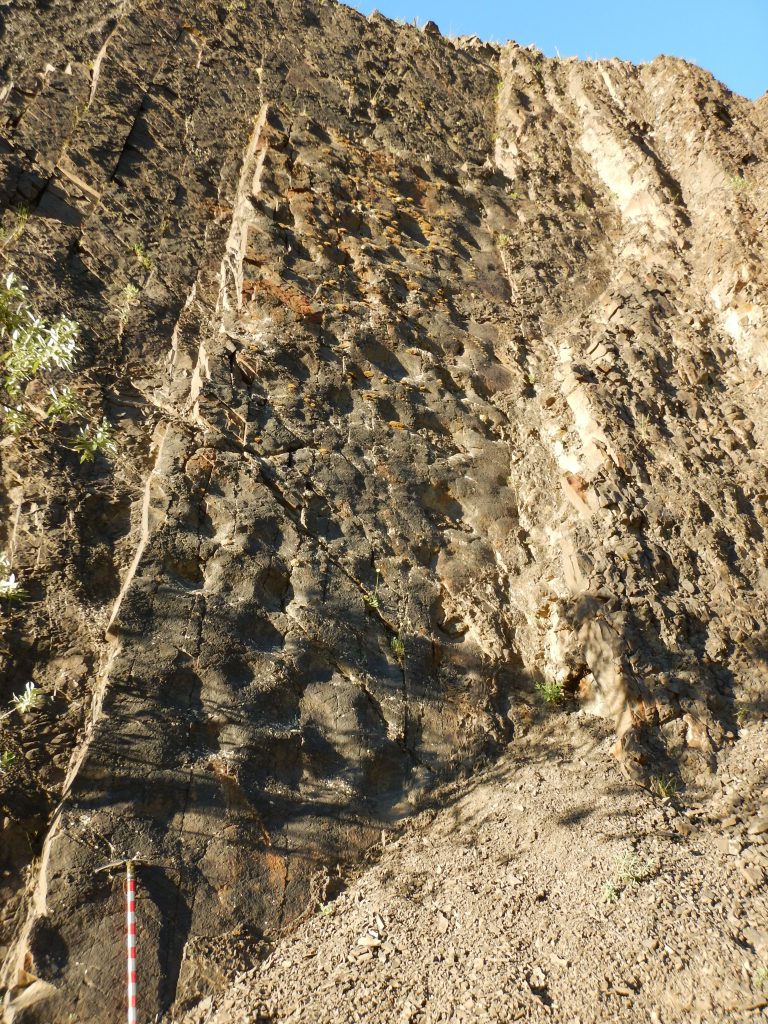
Close-up image on one wall showing numerous depressions of hadrosaur footprints. The ice ax in the lower left of the frame is approximately 3 feet long, for scale. Credit: Photo by Patrick Druckenmiller
The area was part of a large river system, he said, with ponds and lakes nearby. The climate in the area was warmer than today, more like the Pacific Northwest. There were coniferous and deciduous trees and an understory of ferns and horsetails.
Based on the tracks, a variety of juvenile to adult dinosaurs frequented the area over thousands of years. Most common were large plant-eating duck-billed and horned dinosaurs. The team also documented rarer carnivores, including raptors and tyrannosaurs, as well as small wading birds.
Every year, thousands of people visit Denali National Park and Preserve to experience the stunning natural landscape and environment, Druckenmiller said. “It’s amazing to know that around 70 million years ago, Denali was equally impressive for its flora and fauna.
“It was forested and it was teeming with dinosaurs,” he said. “There was a tyrannosaur running around Denali that was many times the size of the biggest brown bear there today. There were raptors. There were flying reptiles. There were birds. It was an amazing ecosystem.”
Preserving fossil sites like The Coliseum is an important part of the National Park Service’s mission, said Denny Capps, the park’s geologist.
“On one hand, we must protect world-class fossil sites like The Coliseum from disturbance and theft,” he said. “On the other hand, we encourage visitors to explore for fossils in their geologic context to better grasp the evolution of landscapes and ecosystems through time, while leaving them undisturbed for others to appreciate.”
Druckenmiller plans to continue collaborating with the National Park Service to study The Coliseum and other track sites.
“Our track research in the park compliments our work on dinosaur bones we collect in northern Alaska, along the Colville River,” Druckenmiller said. “Denali National Park and Preserve is a world-class area for dinosaur tracks. There is a lifetime of exploring left to do, and I can only wonder what other surprises await.”
Reference: “Vertebrate ichnology and palaeoenvironmental associations of Alaska’s largest known dinosaur tracksite in the Cretaceous Cantwell Formation (Maastrichtian) of Denali National Park and Preserve” by Dustin G. Stewart, Patrick S. Druckenmiller, Gregory M. Erickson, Jeff A. Benowitz, Denny M. Capps, Cassandra L. Knight, Kevin C. May and Paul J. McCarthy, 27 July 2023, Historical Biology.
DOI: 10.1080/08912963.2023.2221267
The study was funded by the National Science Foundation and the National Park Service.

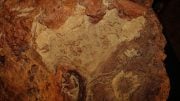
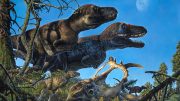
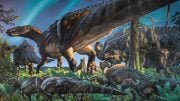
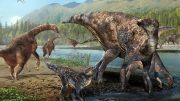
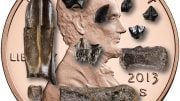
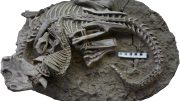
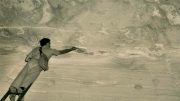
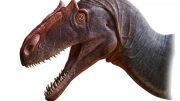
It is illegal to fly drones or ultralight aircraft in the National Parks, so how did they get these pictures?
Velociraptor raptor is a bird not a dinosaur some news about dromaeosauridae as I said all early birds had hypocleidum furcula the dromaeosauridae halskaraptor has a hypocliedium furcula
Halszkaraptor evidence link scientific reports .unusual pectoral apparatus.they are 2 early birds big wing archaeopteryx confuciusornis the archaeopteryx bird .the first bird dromaeosauridae the most primitive bird dromaeosauridae has small wing big feather all have occified sternum
Anchiornis a troodon has big wing it’s not a dromaeosaur it’s an archaeopteryx .anchiornis has bird hip not like famous troodon who has lizard hip but not like dinosaur gator it is small and it does not have unique pubis hip small hip allso found quadrupedal gator type ankle dinosaur modern crocodilian have dinosaur type hip .lizard hip only found archaeopteryx that why oviraptor and arnithomimus is a archaeopteryx
Arnithomimus.? I mean ornithomimus .the size of hip can not tell if they are dinosaur because some dinosaur have small hip like pterosaur .pterosaur allso has occified sternum no joint and it has its first finger and not a tetanuran dinosaur it has palate teeth like eoraptor a first dinosaur type
Archaeopteryx has bird hip but it’s flightless descendants troodon oviraptor has lizard hip oviraptor is close to Confuciusornis archaeopteryx . Dromaeosauridae never have lizard hip.the archaeopteryx with better grasping toe has lizard hip clearly a flying bird so it’s not a flightless feature .occified sternum is flying feature that how they can till velociraptor is flightless bird that came from flying ancestor